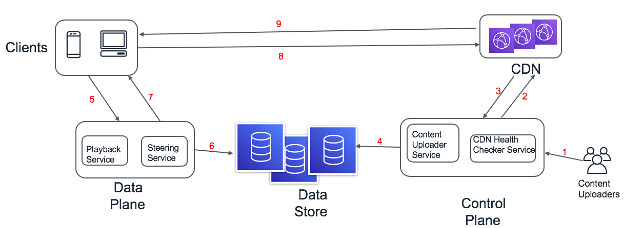

On Android, you can do this by long-pressing the Wi-Fi symbol from your notification center, and hitting the cogwheel to view advanced settings on your Wi-Fi connection. Typically, you can see if you're running 5GHz or 2.4GHz Wi-Fi by opening your device's connection settings. Devices that I plan to use more frequently or more intensively for streaming games or video, I put on the 5GHz SSID. I generally put smart devices on the 2.4GHz SSID. Many of the best games on Xbox Cloud Gaming are turn-based, though, offering a good experience even on slower or less-than-ideal connections. If you're sitting several rooms away, 2.4GHz may offer a more consistent experience, but you may find it's too slow to play action-oriented games. You may find you have the best results using 5GHz while sitting relatively close to your router, with minimal obstructions between yourself and the connection. The general rule of thumb with Wi-Fi frequencies is that 2.4GHz generally offers a better range, while 5GHz offers better speed. While you can play games using 2.4GHz Wi-Fi, 5GHz is recommended. Xbox Cloud Gaming: Phone and tablet requirements It's improving all the time, and if you meet the minimum requirements, now is as good a time as any to check it out.

Minimum system requirements for netflix series#
Microsoft recently upgraded the servers to Xbox Series X server blades too, making the service far higher in quality, with boosted speed.

Despite its beta tag, it's still an impressive service that has become a cornerstone of my active gaming life.

Technically, Xbox Cloud Gaming is still in a "beta" phase, with Microsoft's engineers working tirelessly to improve the service's quality and features. Unlike a native mobile game, you may find that poor 4G or 5G support prevents you from playing games while outside of the home, too. If you're data uncapped, you may find that your internet speed isn't good enough, or doesn't have a high enough frequency to play action-oriented games reliably. Xbox Cloud Gaming is also data-intensive, meaning that those with data caps may find their usage limits getting blown up relatively quickly. Many Xbox games aren't built to run on small displays and have tiny fonts and UI elements that are almost impossible to read without a magnifying glass on smaller phones. Additionally, streaming may save your phone's battery life to some degree, since you're not relying on CPU-intensive native games. It also means you can play games that traditionally aren't available on mobile devices, such as Gears of War, Halo, Flight Simulator, and others. This means that you can play games that have much higher fidelity and complexity on servers powered by Xbox Series X hardware. Put simplistically, Xbox Cloud Gaming sends your inputs up to their servers dotted all across the globe and streams the video game feed down from the internet. This has notable benefits and downsides and is far more complex than simply streaming a video feed as per YouTube or Netflix. What this means is that instead of playing the game on your device, you're instead streaming it from the cloud. Rather than build native mobile games, Microsoft hopes that it can leverage its sizeable console presence to bring services to the phone and tablet market, streamed from Redmond's massive Azure server farms. Xbox Cloud Gaming (known by its codename Project xCloud) is Microsoft's answer to a device-agnostic future.


 0 kommentar(er)
0 kommentar(er)
